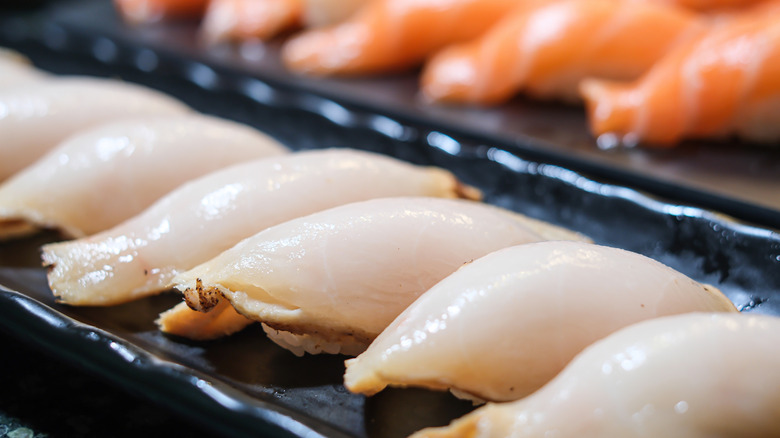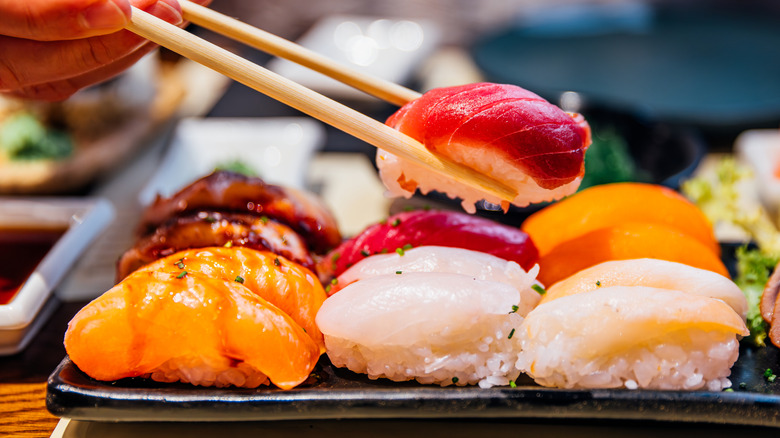Why This Common Sushi Fish Is Banned In Japan
When you think of Japanese cuisine, you probably think of sushi. Americanized versions or not, it's hard to resist the delicate, yet filling, finger food that catapulted Japanese cuisine across the globe. I, much like Jiro, dream of sushi. Whether you're getting a pack of grocery store sushi or a roll from your local Japanese joint, one fish you probably won't even know you're eating is escolar. It's often called white tuna, butterfish, walu, snake mackerel, or oilfish, though oilfish is a different kind of fish altogether.
Escolar was actually banned in Japan in 1977, but not because it's an exceptionally toxic or dangerous fish — it's because this fish causes keriorrhea in many, but not all, people. It is ... the unfriendly cousin of diarrhea. This fish, while delicious, is packed full of wax esters called gempylotoxin. The good news is that even though that word ends in "toxin," it's not actually toxic to humans.
Escolar cannot digest those fatty wax esters and stores them in its flesh and skin. This is relatable because when you eat this fish, you're eating tons of fats that you also cannot digest. The result seems like food poisoning but is actually more akin to eating a few bags of discontinued Lay's chips with olestra. It's not exactly pleasant, whatever it's called.
To eat or not to eat escolar
Since it's legal to serve escolar in the United States, eating escolar is totally up to you. It's not that escolar will make you sick like listeria or E. coli since it's not an infection — it's just extremely uncomfortable if you're one of the people that are negatively affected by those wax esters. I should also point out that for the morbidly curious or the insatiable epicurean, eating less than 6 ounces of escolar is probably safe. Escolar may be one of those foods you should never eat raw, but there also doesn't seem to be much agreement on how much skinning and cooking escolar helps get rid of those pesky esters — it might not matter at all.
If you sincerely wish to avoid eating this fish, the biggest red flag you should look out for is the term "white tuna." Many of us might associate that with common albacore tuna. Any expert or fishmonger will tell you that albacore isn't white — it's a light pink color. If you order white tuna and it actually comes out white, it might be best to not eat it. Whether trying it is worth the risk to you, it's hard not to be intrigued by such a controversial and tasty fish.

